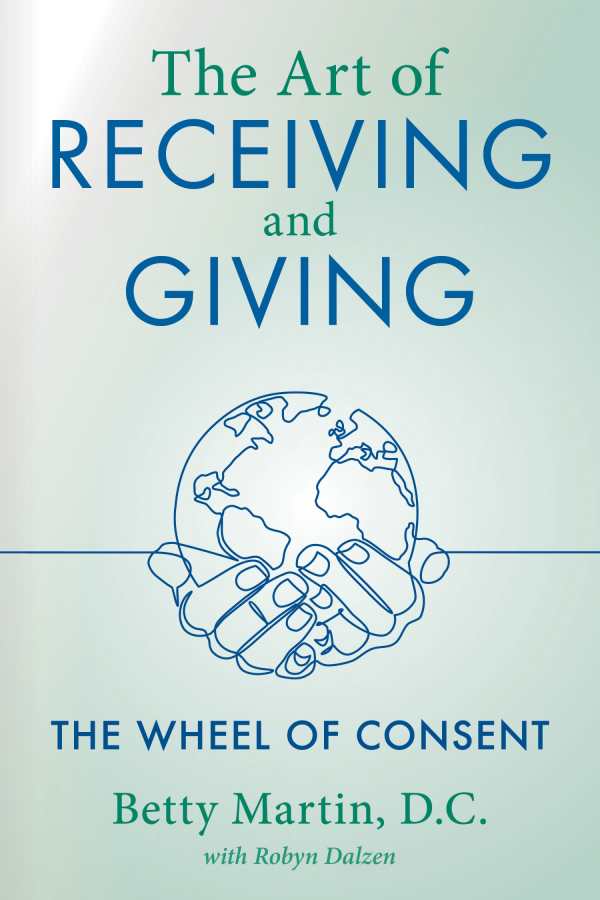The Art of Receiving and Giving
The Wheel of Consent
The Art of Receiving and Giving is inspiring guide to what’s fundamental in all healthy human relationships.
Betty Martin’s spiritual self-help book, The Art of Receiving and Giving, concerns the contributions of touch to one’s sense of self.
Receiving and giving seem like simple prospects, but Martin asserts that many people find these actions difficult to perform in a balanced way: for example, there are people who focus on giving, but who have difficulty receiving what they give. Focusing on a common sensation––touch—as a model, the book asserts that the two actions, to be effectual, must be connected, and indeed that being able to both give and receive, in even measure, can improve one’s personal and professional relationships.
The book’s focus on touch (and, in turn, consent around touch) is centering. Though touch is often taken for granted, Martin asserts that it is crucial to psychological health. And, she says, touch has many implications; thus, while mindful touching can spark emotions including happiness, sadness, and confusion, the book says that touch reactions should not be conflated with sexuality. Using examples from previous workshops, the book covers, without judgment, some varied reactions of past attendees to touch exercises; it seeks to unpack such responses and achieve perspective from them.
Because of the human element, there are unknowns involved in the book’s recommendations; this is reflected in the assertion that in-person lessons have been known to teach their instructors as well as their attendees. Intentions can blur, as is evident in the anecdotes about some attendees’ emotional reactions. Patience and grace are recommended, alongside acknowledgements that touch practices take time to internalize. Not all of the book’s exercises are meant to take on the first try. Still, all of the exercises are introduced in frank terms, resulting in convincing authenticity.
The prose is crisp but informal, describing in-class scenes and a-ha moments in plain terms. Conversations between student and teachers are also recreated; they are used to illustrate the points of individual lessons. Still, much of this book is about teaching by example. More organized and generally applicable are the book’s didactic constructs, as with its introduction of quadrants, or how the roles of giver and receiver align; and with its presentation of the Wheel of Consent, which includes methods for taking responsibility for one’s choices. Orienting and straightforward, these constructs are complemented by accessible exercises and sequential lessons.
Introducing touch practices to achieve healing and self-discovery, The Art of Receiving and Giving is inspiring in asserting that the connection between giving and receiving is fundamental to all healthy human relationships.
Reviewed by
Katerie Prior
Disclosure: This article is not an endorsement, but a review. The publisher of this book provided free copies of the book and paid a small fee to have their book reviewed by a professional reviewer. Foreword Reviews and Clarion Reviews make no guarantee that the publisher will receive a positive review. Foreword Magazine, Inc. is disclosing this in accordance with the Federal Trade Commission’s 16 CFR, Part 255.

